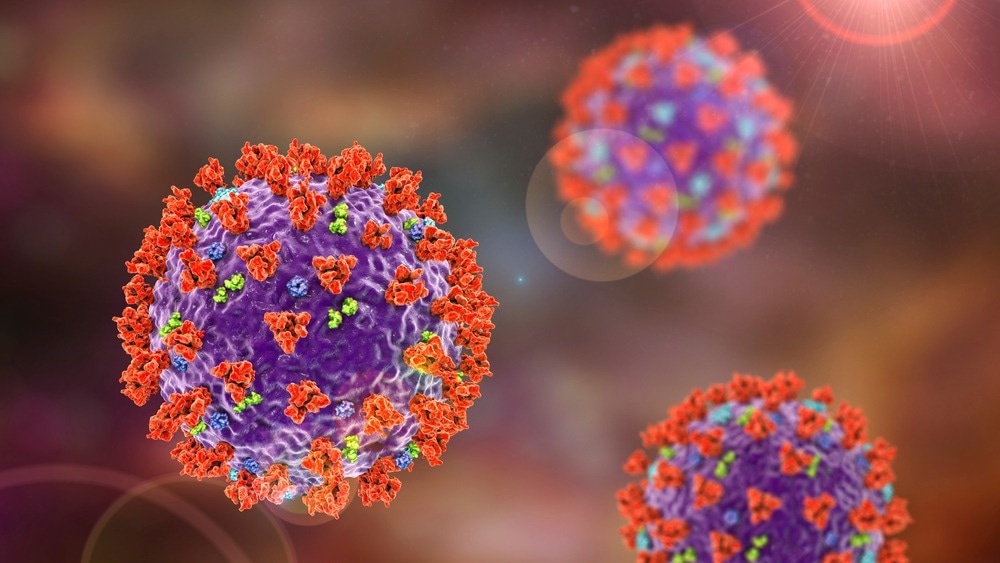In a recent article published in Nature Genetics, researchers showed that mammalian SWItch/Sucrose Non-Fermentable (mSWI/SNF) chromatin remodeling complexes represent a potential class of host-directed broad-acting severe acute respiratory syndrome coronavirus 2 (SARS-CoV-2) therapeutic target.

Background
Chromatin is a deoxyribonucleic acid (DNA) and protein(s) network that organizes itself into chromosomes. SWI/SNF Related, Matrix Associated, Actin Dependent Regulator Of Chromatin, Subfamily A, member 4 and 2 (SMARCA4/2) gene instructs making of a subunit of a group of SWI/SNF complex family that regulate chromatin remodeling.
Another name for the SMARCA4 gene is Brahma-related gene-1 (BRG1), and the SMARCA2 gene is Brahma (BRM). While the former is highly mutated chromatin remodeling adenosine triphosphate-ase (ATPase) in cancer, the latter is a tumor suppressor protein.
Background
Amid the continuous emergence of new SARS-CoV-2 variants with immune-evading potential, there is an urgent need for new prophylactic and therapeutic antiviral strategies against current and yet-to-emerge coronaviruses (CoVs). However, it requires an in-depth understanding of molecular and cellular-level virus–host interactions.
Genetics & Genomics eBook

Among the currently authorized direct-acting coronavirus disease 2019 (COVID-19) drugs, paxlovid targets SARS-CoV-2 main protease, while remdesivir and molnupiravir target its polymerases. As SARS-CoV-2 develops resistance to these drugs, new drug classes with more efficacy and broader antiviral activity are the need of the hour.
In this regard, host-directed therapeutics are an attractive and viable option. Such drugs are potentially more drug-resistant, have much broader activity across all CoVs, and present an increased probability of synergy with other direct-acting anti-SARS-CoV-2 drugs.
Seven CoVs, including SARS, SARS-CoV1, SARS-CoV-2, and HCoV-NL63, use host angiotensin-converting enzyme 2 (ACE2) as a receptor to attach their spike (S) glycoprotein, a process in which several proteases, e.g., transmembrane protease serine 2 (TMPRSS2) mediate proteolytic processing. Then, the virus enters the host cell and releases its ribonucleic acid (RNA) in the cytoplasm to establish infection via the assembly of transcription complexes for further budding.
Clustered Regularly Interspaced Short Palindromic Repeats (CRISPR)–CRISPR-associated protein 9 (Cas9) technology has helped scientists identify host gene subunits essential for highly pathogenic CoV infection.
One such subunit is mSWI/SNF or BRG1-associated factor (BAF) complexes that have remained highly conserved across eukaryotes. They form three subcomplexes, canonical BAF (cBAF), noncanonical BAF (ncBAF), and polybromo-associated BAF (PBAF). They all have unique subunit composition, nucleosome binding functions, interactions, and genomic localization properties.
More than 20% of human cancers bear mutations in mSWI/SNF complexes. Thus, many drugs inhibiting mSWI/SNF family complexes are under evaluation in clinical trials across many cancer-related indications. However, there is a shortage of data on how mSWI/SNF complexes mediate SARS-CoV-2 infection.
About the study
In the present study, researchers used cell lines from three primary human cell types, HEK 293T, Vero E6, and Huh7.5, to show how functional mSWI/SNF complexes intervene during SARS-CoV-2 infection. They used CRISPR–Cas9 screens in Vero E6 cells to find which of the three mSWI/SNF complexes, PBAF, cBAF, and ncBAF, regulate SARS-CoV-2 infection. Next, the team challenged these cells with infectious clones of SARS-CoV-2 expressing mNeonGreen, a fluorescent reporter, to quantify infected cells using microscopy.
Results
The study investigations revealed that the catalytic action of the mSWI/SNF complex was essential for increasing DNA accessibility at the ACE2 locus and promoting SARS-CoV-2 susceptibility. Specifically, the transcription factor hepatocyte nuclear factor 1α (HNF1α) binds and directs cBAF complexes to the ACE2 locus. Since this mechanism remains conserved across all tested human cell types, it emerges as a therapeutic target for drugs that degrade or inhibit SMARCA4/2 subunits of the mSWI/SNF complexes.
Although ACE2 gene expression is a determinant of SARS-CoV-2 pathogenesis, dynamic regulation of it at the molecular level is incompletely understood, especially the effect of transient ablation of ACE2 in adult animals. The screen used in this study helped the researchers identify SMARCA4 as the second top hit after ACE2 in A549 and Huh7.5 cells. The other two screens using only Huh7.5 cells did not detect ACE2 as a statistically significant hit. For instance, ACE2 ranked 171 of 19,364 genes in a screen performed at 33 °C with Huh7.5 cells.
Conclusions
The authors advocated for more detailed biochemical and structural studies to define the nature of HNF1A/B transcription factor–BAF complex interactions as they display significant functional differences between mice and humans.
More importantly, they showed the potential advantages of transiently targeting mSWI/SNF complexes and the feasibility of this approach. For instance, SMARCA4 inhibitors could inhibit diverse ACE2-utilizing viruses, e.g., SARS-CoV-2. Also, the authors anticipated that host-directed immunomodulatory drugs would synergistically antagonize CoVs, including sarbecoviruses and remdesivir-resistant CoV strains.
Nonetheless, small molecule drug antagonists of SMARCA4-mediated mSWI/SNF ATPase activity could help combat most CoVs with pandemic potential.
- Wei, J. et al. (2023) "Pharmacological disruption of mSWI/SNF complex activity restricts SARS-CoV-2 infection", Nature Genetics, 55(3), pp. 471-483. doi: 10.1038/s41588-023-01307-z. https://www.nature.com/articles/s41588-023-01307-z
Posted in: Medical Science News | Medical Research News | Disease/Infection News
Tags: ACE2, Actin, Adenosine, Adenosine Triphosphate, Angiotensin, Angiotensin-Converting Enzyme 2, Cancer, Cas9, Cell, Chromatin, Coronavirus, covid-19, CRISPR, Cytoplasm, DNA, Drugs, Efficacy, Enzyme, Eukaryotes, Gene, Gene Expression, Genes, Genetics, Genomic, Glycoprotein, Immunomodulatory, Locus, Microscopy, Molecule, Palindromic Repeats, Pandemic, Protein, Receptor, Remdesivir, Respiratory, Ribonucleic Acid, RNA, SARS, SARS-CoV-2, Serine, Severe Acute Respiratory, Severe Acute Respiratory Syndrome, Syndrome, Technology, Therapeutics, Transcription, Tumor, Virus

Written by
Neha Mathur
Neha is a digital marketing professional based in Gurugram, India. She has a Master’s degree from the University of Rajasthan with a specialization in Biotechnology in 2008. She has experience in pre-clinical research as part of her research project in The Department of Toxicology at the prestigious Central Drug Research Institute (CDRI), Lucknow, India. She also holds a certification in C++ programming.
Source: Read Full Article
